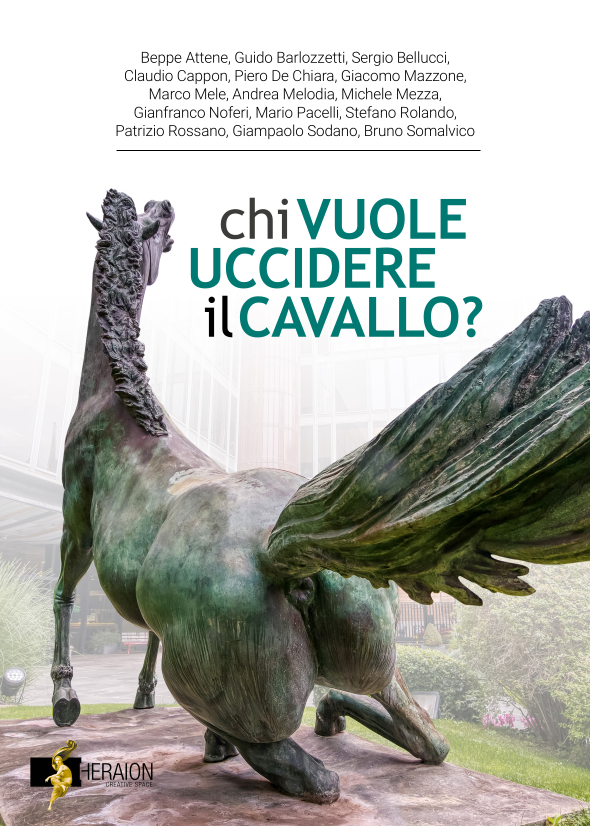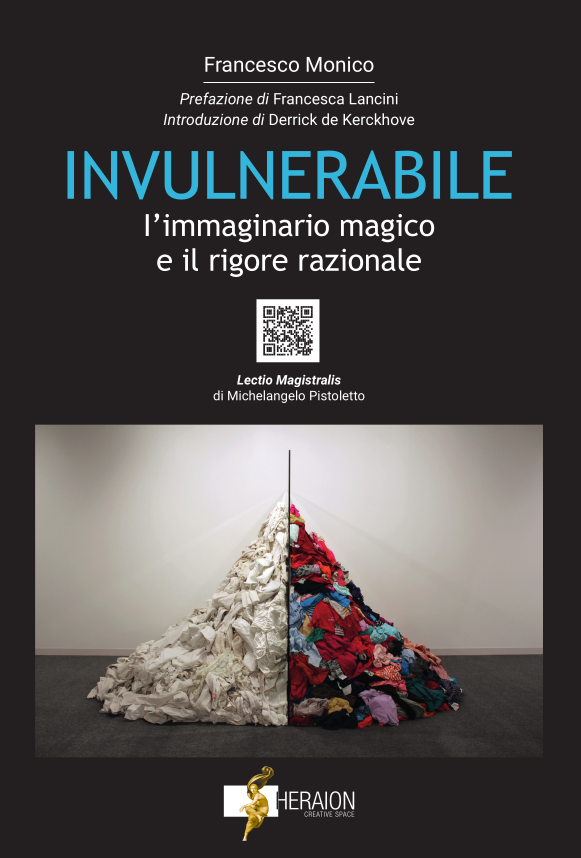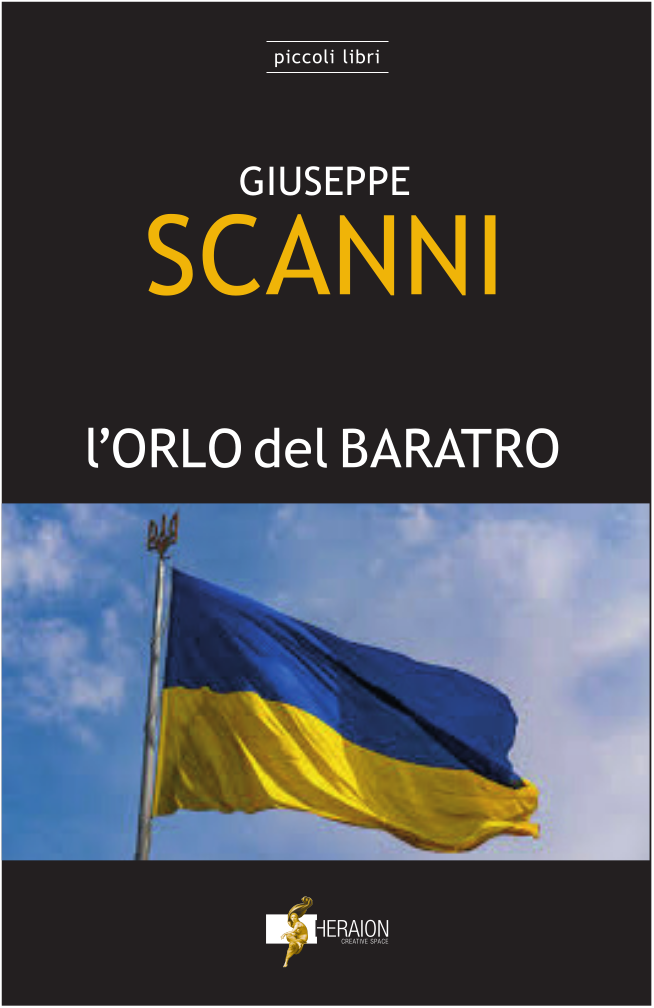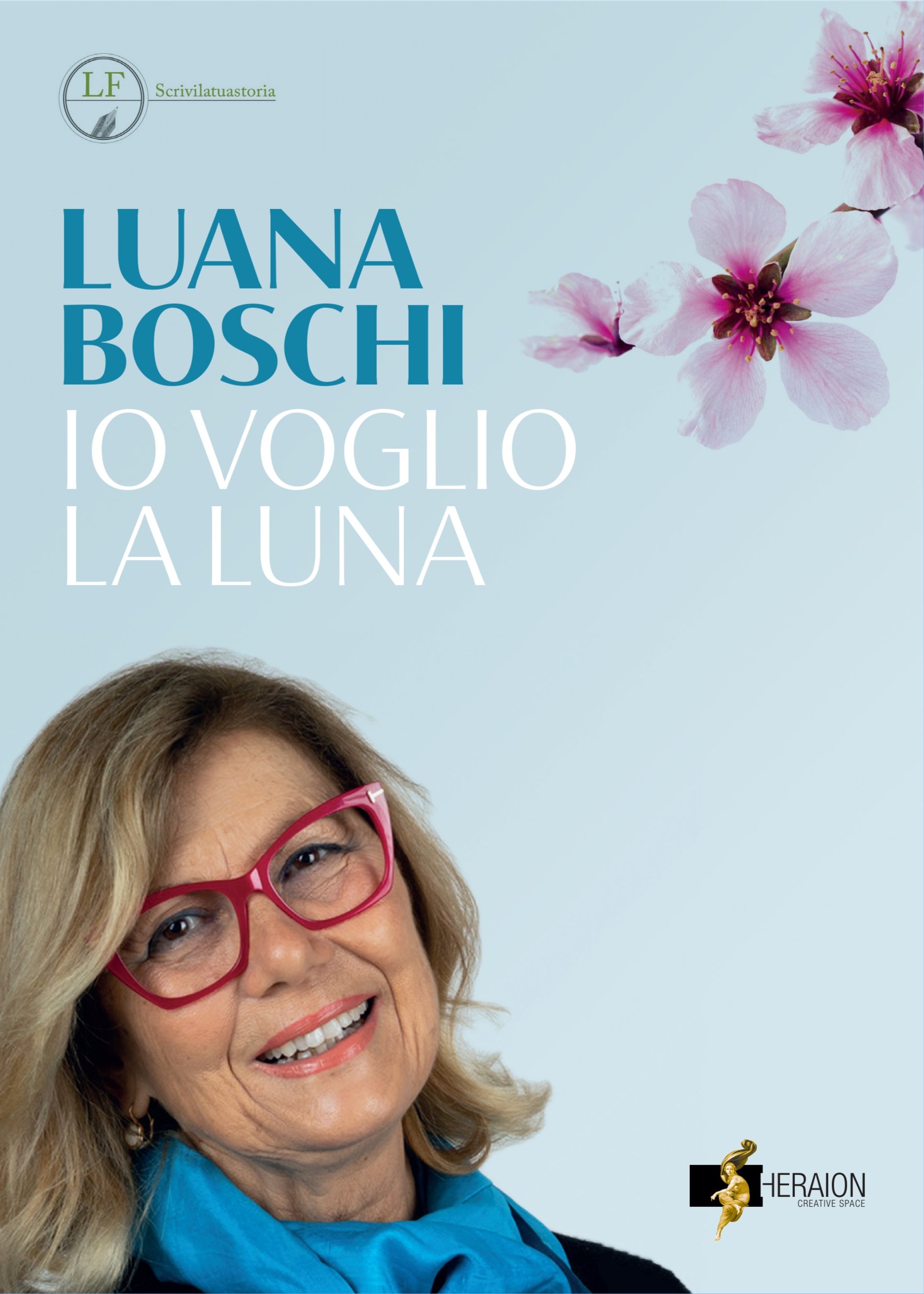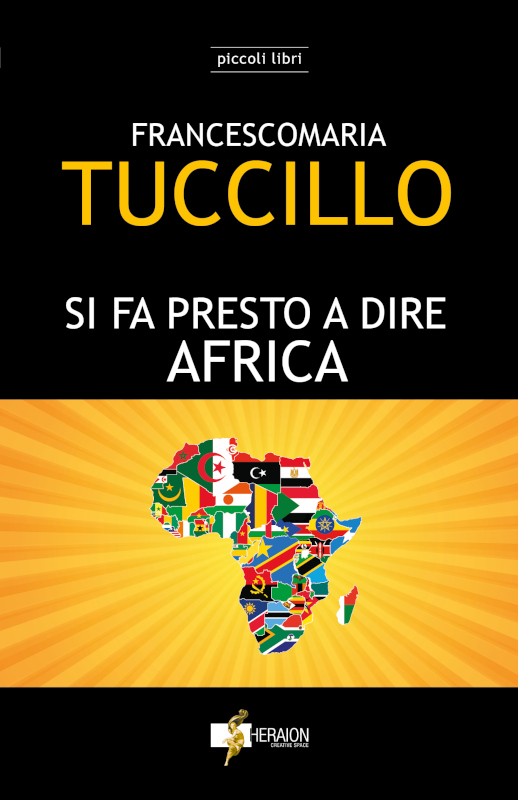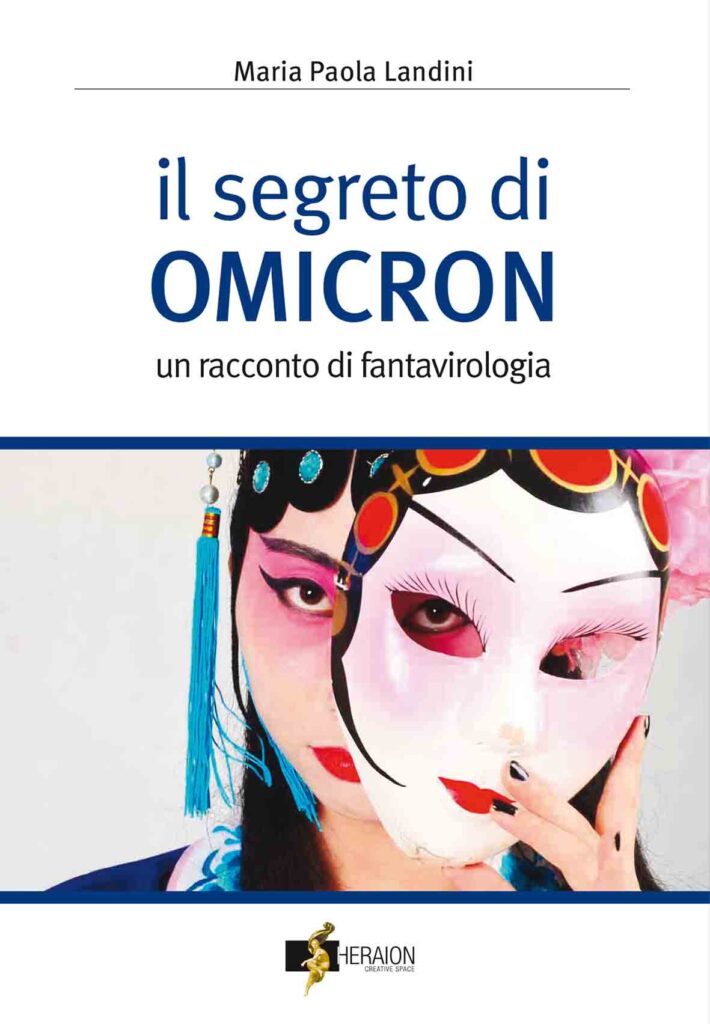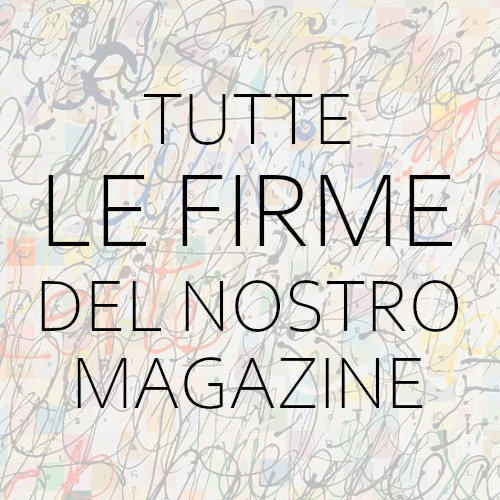Mona Erfanian Salim
Each of us is a part of the story of the city we live in or stay in for a short period. The phrase “The Story of The City” is a simple word that on first impression has a clear meaning, which often searches for the subject in written literature not oral literature, and not even in the daily talks and behavior of the city’s people. This can be considered as one of the reasons that city plans usually are not compatible with the real needs of today and the future of many cities. “The Story of The City” project seeks to discover the reality of the city from the people’s narratives. What is added to the city in this way, regardless of the real story of the city, is a piece patched to the main story, not a part of the text or its continuation. The story always offers a unique window into the often overlooked details and beyond the typical tourism perspective and urban planning. Many cities worldwide face similar challenges related to survival, prosperity, comfort, security, sustainability, love, affection, and friendship. This project not only aims to address specific questions about each city but also seeks to shed light on solutions to the urban issues that societies globally encounter. This article talks about the project and shares its initial achievements resulting from the completion of its first case study.
The project’s main idea comes from the book “The Story of the City” by Seyed Mohsen Habibi. He mentions that the city can be likened to the story since both are the result of hopes and visions of the people who have a root in the past, are living in the present time, and are looking at the future. Every city throughout its history is constantly changing its face through the life stories of its inhabitants. Therefore, the story of a city comes from the story of the people who live in it. The narration of these stories suggests a deeper understanding of the city and helps to create a better city. The city narrative provides a platform for inhabitants to indirectly express their desires and real passion for urban life.
Stories heard from inhabitants are often similar, as they are shared among people, becoming part of the city’s collective memory. They give a memorable identity to each element such as alleys, houses, shops, and trees of the city. They also make each of the inhabitants a storyteller and give them an important role in the development process and the life of the city. All these will be a strong barrier against external and unbalanced changes in the city. In this way, each inhabitant is transformed from a number in the city statistics to an individual person. Furthermore, as time passes, these stories are naturally reconstructed to meet the needs of the present, leading to an uncontrollable evolution of historical viewpoints according to the demands of the future. The experiences and memories that best fit a story allow for better inclusion and foster trust among individuals.
Effective decision-making concerning urban development policies requires sensitive handling and meaningful communication between city management and urban society. Therefore, the narration of a city’s history becomes essential in this context, clarifying what aspects can be changed and what should remain constant. The art of city narrative provides a platform for inhabitants to indirectly express their desires and raise critical questions about urban life. An inherent mission of city managers is to listen to the stories shared by inhabitants, understand them, and properly guide their development.
They bear the responsibility of promoting urban development through the appreciation and understanding of cultural abilities and assets. The stories told within a community hold immense importance, as they serve as the guiding force and foundation for the culture of a place. This essential philosophy should remain unchanged, regardless of changing managers. The preservation of the cultural heritage of a city is vital in the collective home of everyone, ensuring its proper transmission to future generations. Thus, the passing down of stories through generations becomes crucial. A city is a living organism, active, eroding, evolving, and changing. While listening to the story of a city can be an enriching experience, we must also contemplate the story that will be told about the city in the future.
Art, as a powerful medium, has the potential to involve people with what the city genuinely needs. Art can be instrumental in fostering a deeper understanding of the urban plans’ impacts on the surrounding spatial realm while further involving the community and meaningful two-way communication. In this regard, this project that concentrates on the importance of the city narrative applies art as a tool for the expression of the people’s requests and the city’s real needs. “The Story of The City” project starts in every city by interviewing people and asking them about their stories in the city.
It discovers situations inside the city that many stories are shaped through the harmonization of people and places in them during the time. The main part of the project is to narrate the contemporary stories of the city by illustrating them. It introduces some special places or concepts in the city, which contain the main stories of the people in that city. As inhabitants often forget the real stories of their cities through time, this project attempts to remind them of their memories and deepen their connection with their city.
The results of this project could have clear positive and constructive messages that inhabitants may have heard less of or have not paid enough attention to. The essence of a city lies in its people, and when they actively engage with urban issues, they become better inhabitants. One of the applications of this project is to empower people to share their life stories through their artistic skills, thereby they can narrate local tales to those who enter the city. Also, communication between people especially from different generations becomes crucial in shaping the city’s future, ensuring continuity the progress. By increasing awareness of the city’s story and history, individuals can integrate more easily into the host society, and foster a sense of belonging.
In this project, a dynamic stream for thinking and talking about the city begins and continues in all stages of the work through conversations with people. This stream continues in the stage of exhibiting the illustrations, publishing books, producing documentary movies, sharing collected information on social media, and creating a reference website. This is the main mission and goal of the project, and it has benefits as follows for every city where the project is carried out:
- Creating a context for balancing urban development and sustainable tourism strategies;
- Proving a practical tool to understand people’s needs in the city, from the side of the sociological approach;
- Providing a simple tool that fosters the promotion of social communication between multicultural communities.
- Helping to give meaning to the human values of the city and to preserve
The conception and planning of the main project started in 2021 and some preliminary interviews were conducted in Tehran, Paris, and Lisbon. In the early months of 2023, Caldas da Rainha in Portugal was chosen as the first case for the implementation of the project due to its compatibility with the framework of the project. The city is one of the creative cities of UNESCO.
The project also had the support of the director of the Art & Tour International Film Festival which was held in the city in 2023. The city boasts a powerful and distinctive identity, born out of its historical roots and visionary leaders. The city’s identity is deeply intertwined with its past, yet it is a place where modernity and tradition seamlessly blend. The thermal hospital, ceramics tradition, and the fostering of art and creativity remain vital aspects of Caldas da Rainha’s culture. Furthermore, the city has evolved into a thriving commercial and entrepreneurial hub, seeking to control its positive aspects to create a sustainable economic system.
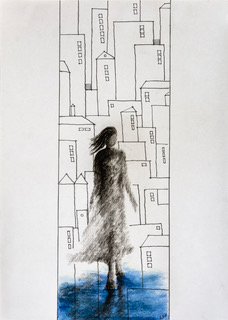
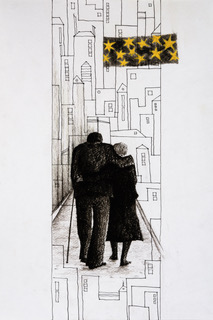

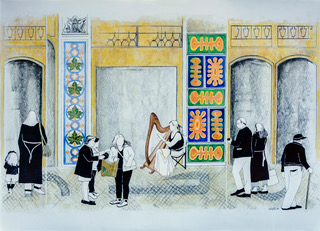
The project started in March 2023 and its results were presented at the end of October 2023. The project’s main goal was to indicate the cultural capabilities of the city and to establish a dynamic stream of thought about the city and its inhabitants. The audiences’ feedbacks brought the project closer to its goal. What was experienced in the implementation of the project as well as its presentation in the city of Caldas was beyond and deeper than the achievements that were initially predicted for it. These experiences, which are the intangible achievements of the project, can be mentioned from two views. The first one implies the participation of the local community in an art project. The people described their memories and interesting ideas about the city, and later they observed them in some artworks that they had a role in making. It reminded the people of some forgotten layers of the city, as well as caused a multi-faceted conversation among them. The second one was opening a different window for a conversation about the city that it can continue in the future. The final presentation of the project was planned as one of the events of the festival. It was a big opportunity to hear the opinions and ideas of people from all around the world who come from different geographies and cultures. A combination of harmonized voices that despite the diversity of languages, conveyed a single expression; the language of art can open a different window for thinking and looking at the city.
In conclusion, although the idea of this project has come from the artist’s architectural knowledge and experiences, it could create a link between the technical layers of the city and the human layers of it. The project in its first experience, linked theoretical studies, individuals’ experiences and memories, and the artist’s imagination in a city. This project attempted to show the cultural capabilities and the human assets of the city and also it reminded us that the people are the main actors of the story of each city. The implementation of it in Caldas da Rainha is the beginning of a long artistic journey in the heart of cities all around the world. In essence, it will be done with the help and support of the local communities in each area and will create a collection of urban stories for humanity lovers.
Ndt.: ReasearchGate sull’autore citato, LINK
SEGNALIAMO
-
IL DESERTO CHE AVANZA
POLIS SICILIA La Sicilia rischia di diventare un grande deserto, come quelli della Libia o della Tunisia. La siccità e le temperature sempre più alte, assieme alla mancata gestione delle risorse sempre più scarse, portano oggi all’emergenza siccità. Un fatto nazionale, non solo locale. In Italia manca una Legge Quadro sul clima, nonostante gli effetti…
-
EST FILM FESTIVAL 2024

POLIS Inizia domenica 21 luglio il 18° Est Film Festival, manifestazione centrale nel panorama della Tuscia Viterbese che dall’anno scorso è il centro di un progetto che coinvolge l’intero territorio del Lago di Bolsena. Allo storico festival che dal 2007 si svolge a Montefiascone si aggiungono una rassegna cinematografica sul cinema fantasy a Capodimonte e…
-
BOLOGNA. RADICI FESTIVAL
POLIS BOLOGNA Mille contrarie maniere di vita Prosegue l’intreccio di storie e memorie, civili e ambientali, che appartengono al territorio bolognese attraverso il “Radici. Festival delle memorie civili ed ambientali”. Tre giornate, a metà giugno, per tenere vive storie di lavoro, di comunità e di rapporto col territorio. Tra spettacoli, laboratori, concerti, trekking e free…
-
LAVORATORI CERCASI DISPERATAMENTE
Quello di Confcommercio è solo l’ultimo degli appelli alla politica lanciato dagli imprenditori e dalle associazioni di categoria (Mercoledi 19 giugno) In Lombardia mancano 70 mila lavoratori per un turismo che cresce e a livelli imprevedibili, un settore capace di essere molto attrattivo per gli stranieri ma non per i lavoratori evidentemente. Oltre agli stipendi…
-
MILANO, L’ESSENZIALE

Nella tre giorni del Wired Next Fest al Castello Sforzesco di Milano le ultime tendenze dal mondo scientifico, culturale, politico ed economico italiano e non solo. Grandi protagonisti l’intelligenza artificiale e il senso dell’innovazione, in tuitta la sua complessità. Stella Assange, Zero Calcare, Lina Galore, Paolo Benanti. Dove va il mondo… La star è Stella…
-
MILANO: BLU E VERDE: IL SECOLO NOMADE
(COSA CENTRANO LE MIGRAZIONI CON L’EFFETTO SERRA) La crisi climatica cambia o almeno dovrebbe cambiare le prospettive di tutti, politici compresi. Eppure se tra le persone questa consapevolezza tende a consolidarsi, tra chi decide permane un certo ritardo nel prendere atto del cambiamento climatico e una difficoltà sempre più evidente a individuare e sostenere soluzioni.…
-
TORINO: FESTIVAL CINEMAMBIENTE
Il Festival CinemAmbiente 2024 è la ventisettesima edizione di una manifestazione dedicata ai film a tema ambientale, organizzata dal Museo Nazionale del Cinema di Torino. Si svolge dal 4 al 9 giugno 2024 a Torino (quest’anno anche online sulla piattaforma OpenDDB, dove una selezione dei titoli in cartellone sarà visibile in replica sul sito dell’evento,…
-
QUO VADIS
(tradotto dove andiamo, da dove veniamo e cosa mangiamo stasera) POLIS TRENTO Quo vadis, “I dilemmi del nostro tempo” è il titolo del Festival dell’Economia di Trento, arrivato ormai alla sua diciannovesima edizione. Tema complesso e complicato, sicuramente affascinante, derivato di un mondo che cambia e che andrebbe letto con paradigmi differenti e pensiero lungo,…
-
IL SALONE (GREEN) DEI RECORD
Successo straordinario per il salone del mobile 2024, un edizione da record e la numero 62 di un’evento, capace di cambiare il volto di Milano per una settimana. In aumento il numero di espositori, giornalisti ed addetti ai lavori, e il numero dei turisti da tutto il mondo, attratti da eventi talk mostre ed installazioni.…
-
GLI INDUSTRIALI DEL SUD CHIEDONO INFRASTRUTTURE
Si sono riuniti, hanno lanciato un sondaggio suddiviso per territorio, hanno elaborato e reso compatibili e sinergici gli esiti della consultazione ed hanno varato una loro proposta, riguardante le infrastrutture necessarie al Sud, per evitare la fuga delle imprese e dei millenial. A fare un simile complesso lavoro sono stati i rappresentanti dell’ANCE-giovani, riunitisi a…

